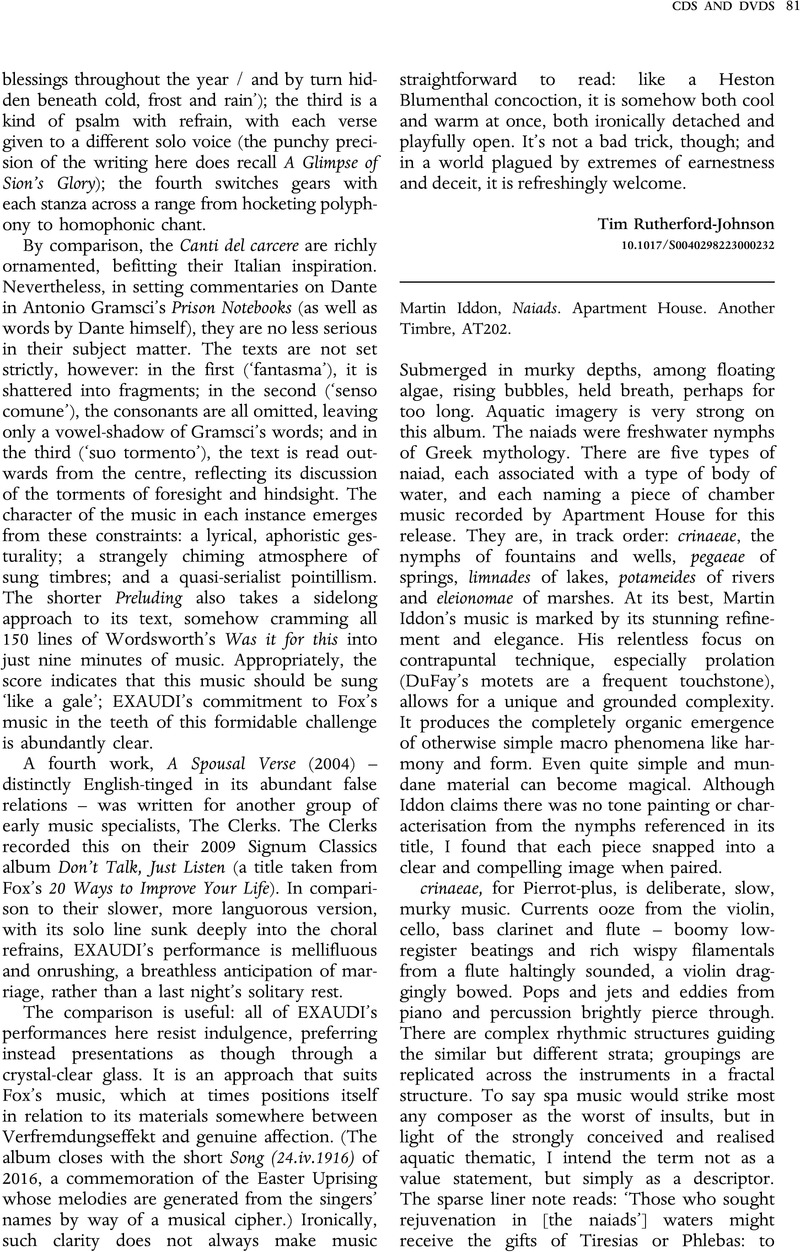No CrossRef data available.
Martin Iddon - Martin Iddon, Naiads. Apartment House. Another Timbre, AT202.
Review products
Martin Iddon, Naiads. Apartment House. Another Timbre, AT202.
Published online by Cambridge University Press: 12 July 2023
Abstract
An abstract is not available for this content so a preview has been provided. Please use the Get access link above for information on how to access this content.

- Type
- CDs AND DVDs
- Information
- Copyright
- Copyright © The Author(s), 2023. Published by Cambridge University Press



